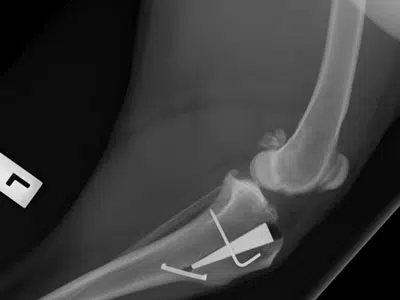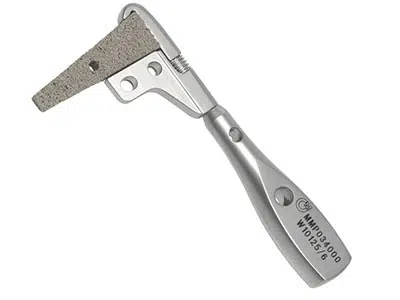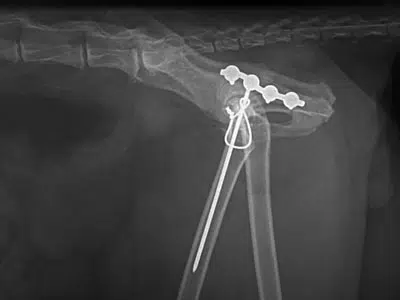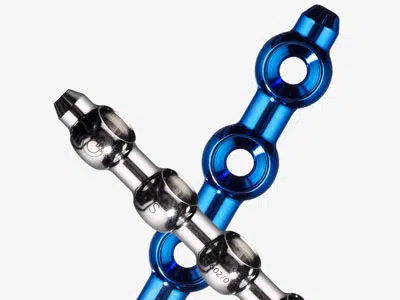Surgical Procedures
Our veterinary team has a wide range of surgical skills. The team offers the full range of general soft tissue and dental surgery and also shares a wide repertoire of more complex procedures. These include difficult cancer removals, open chest surgeries, gall bladder removals, perineal hernia repair, brachycephalic airway surgery and the uncommon but tricky laryngeal paralysis corrective procedure.
We have recently acquired an operating microscope. This makes delicate operations such as corneal surgery much easier with better results for your pet.
The most common orthopaedic procedures are knee reconstructions. These are for two reasons.
They often follow cranial cruciate ligament (CCL) rupture. In humans this ligament is called the ACL and it is the same injury the many rugby and netball players suffer. There are more than 30 documented CCL procedures. None are perfect. We mainly use the MMP (Modified Maquet procedure). This method involves the use of titanium foam wedges to change the geometry of the joint. This technique delivers early weight bearing, rapid rehabilitation and a low complication rate. We have received referrals from all over the top of the South Island to do this procedure. It is not suitable for all patients and for some we use a synthetic replacement ligament technique. The choice of technique will depend on a number of factors – we will discuss the pros and cons of each and choose the best option for you and your pet.
We also do knee reconstructions because of luxating patellas – kneecaps that pop out of place. This is a very common problem in short-legged breeds of dogs. Not all dogs need surgery. Many can be managed in less invasive ways. Again, we will discuss the pros and cons of each and choose the best option for you and your pet.
We are well equipped to deal with a wide range of bone fractures. ‘String of pearls’ (SOP) bone plating is a locking plate system that we have recently invested in. We still do use conventional bone plates in a number of broken bone repairs. Some of the downsides of conventional plating involve the number of screws we can place and the strength the bone-screw system can cope with. Locking plates offer a number of advantages – they are far more rigid, can require less screws and have a lower failure rate. The system complements our other plating equipment, external fixator, pin and wire systems.




